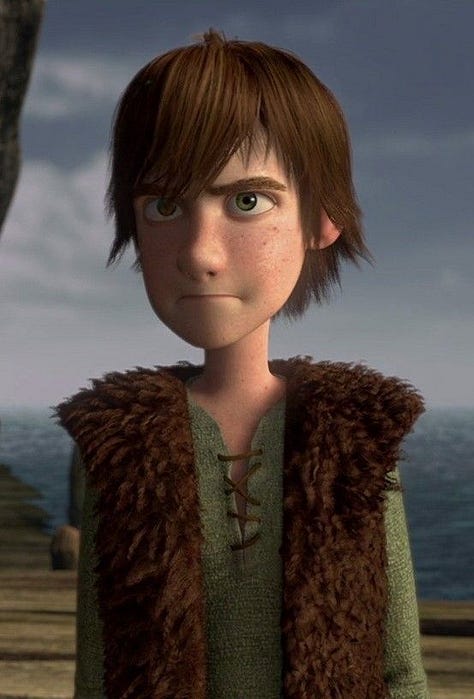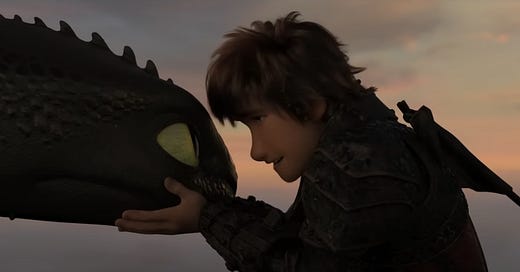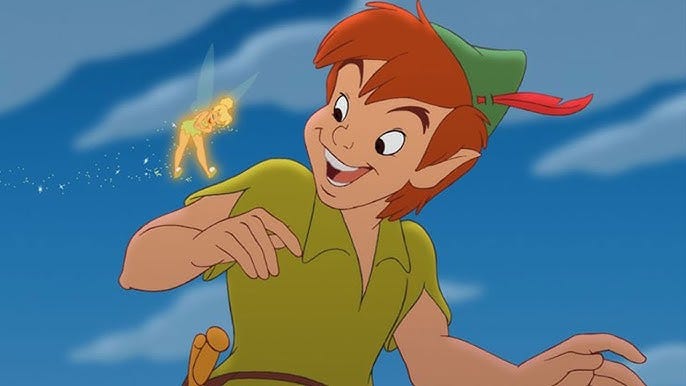Hiccup Horrendous Haddock III, the Hero Who Grew Up
Watching Hiccup and his dragon grow up...twice.
Hiccup Horrendous Haddock the Third, Dragon Master and Chief of Berk, the Viking who grew up from 2003 to 2015, and again from 2010 to 2019.
In Cressida Cowell’s book series, How to Train Your Dragon, Hiccup was introduced as a 10-and-a-half year old. The last book saw him at around 15 (although he was born on February 29, technically making him 3 years old). By the time the series ended, he had proved himself as a true expectant chief and a protector of dragons as well as someone who had forever changed the outlook of his tribe.
While the movies stuck the landing and largely drew from Hiccup’s character, they also took a very different route with most of the source material.
Hiccup’s age was no exception. The first movie saw him as around 15, the second movie reintroduced him as a 20 year old, and the third movie aged him to 21.



I don’t know if letting him grow so rapidly between the first and second film was a controversial move, but it sure felt like one.
Nowadays, continuing series with older versions of characters is a popular move. It’s an extension of nostalgia. Old characters return to newer generations, or shows get rebooted just to imagine what beloved childhood characters are up to. This was different. How to Train Your Dragon 2 made a cut-and-dry alteration to the age of a main character in a children’s series, one that far out-aged the same main character in the still ongoing book series, and it unexpectedly worked in their favor.
When the first How to Train Your Dragon film came out, I watched it four times (twice in the theater, twice at home) and have not watched it since. To this day, I don’t know why I watched it so many times. I didn’t enjoy the film. Characters were missing or utterly rewritten. Humans and dragons couldn’t communicate in a special language anymore. The dynamic between Hiccup and Toothless had changed, and so had Toothless’ design.
But when the second movie released, I didn’t mind the further departures from the source material. Hiccup being older was a sign that the movies were diving into their own canon, and once the sequel made it clear that the movies were a separate reality from the books instead of an adaptation, the issue was moot. Once it was free, the movie franchise was able to do something truly wonderful.
The first film (Hiccup being 15) released in 2010, and the second (Hiccup being 20) released in 2014. Considering the book series’ younger audience and the four year film gap to Hiccup’s five year growth, and the expected audience would now feel even younger to the main character than they did before. The sequel took the Hiccup who the target audience could relatively compare itself to and instead made him someone the target audience could look up to.
In most children’s series, if the character ages at all, it is rarely past teenhood. The child saves the day, and then what? The reader doesn’t have to think about the after, and there’s honestly some fear in doing so; the pitting of children against adults is a big theme in children’s and young adult books. Old traditions are broken, or adults are stodgy and ignorant. Why would you want to imagine your favorite character growing to that age? What if the childhood hero commits the most heinous action of all—becomes a normal, uninteresting, unperceiving adult?
DreamWorks gave How to Train Your Dragon the ability to use time as a factor in its storytelling. As a result, Hiccup became one of the best adult role models in children’s animation. For one thing, Hiccup’s interests from when he was an outsider don’t disappear once he is accepted into the group; instead, Hiccup’s continued experiments and pursuit of knowledge grow throughout the series, and he builds off of consistent practice over previous years. He also matures into the role of chief without changing his personality to fit the previous leader. Hiccup builds a strong leading presence while learning to rely on and delegate among others; he learns to be commanding while continuing to be gentle. The Hiccup we see over the course of the series is someone who has grown past his doubts and problems, who took on responsibilities he didn’t feel fit for and grew into them, and who built a healthy romantic relationship that was proven to last. Hiccup has proven himself balanced in his personal, societal, and romantic endeavors. He is a responsible leader and worthy of his honor and title.
To his viewers, Hiccup showed that there was life after youth, and that aging didn’t mean that dragons or adventure would suddenly be forgotten. At the same time, he showed that a hero had responsibilities beyond his own main interests, whether or not those responsibilities and interests overlapped. Hiccup also showed that removing one tradition didn’t mean all traditions should be ignored and, in the same vein, that adults being corrected in one aspect didn’t mean adults should be disregarded in all aspects.
Of all of the film franchise’s strengths, Hiccup’s age—and everything that it represents—stands among the greatest.
Tune in next week to see another HTTYD-related post. While you’re waiting, let me know what you think about this one.








Rosty- The first time I watched these movies I thought it was really good. It got even better upon second and third watch. I appreciate the reminder. Hope you’re well this week? Cheers, -Thalia